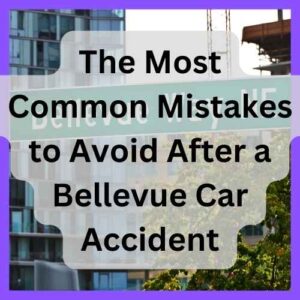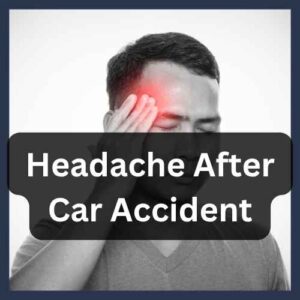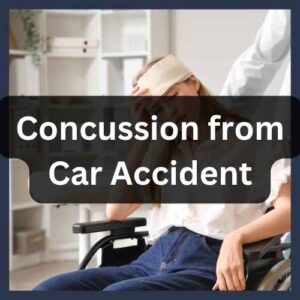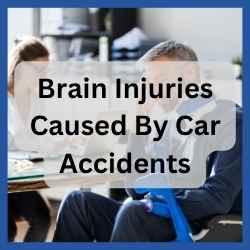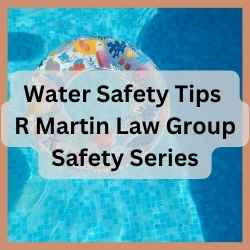Understanding T-Bone Car Accidents: Causes, Injuries, and Legal Guidance for Bellevue Victims
Let’s be honest—no one wakes up thinking, “Hey, today’s the day I get into a t bone car accident.” Yet here’s the million-dollar question: if it happens, what do you actually need to know? Pull up a chair. We’re about to unpack this messy, dangerous puzzle—without the usual legal mumbo jumbo (okay, maybe just a little).
👉 Looking for a Personal Injury Lawyer Near Tacoma, WA? Contact R Martin Law Group today for a free consultation.

What Is a T-Bone Car Accident and How Do They Happen?
Picture this: two vehicles meet at an intersection, and one crashes directly into the side of the other, forming the classic “T” shape. Voila—that’s a t bone car accident! These collisions usually occur when someone:
- Runs a red light or ignores a stop sign (definitely not cool).
- Makes a left turn without yielding to oncoming traffic (oops).
- Gets distracted by a phone, Instagram, or TikTok scrolls.
- Drives too fast or while impaired (danger zone alert).
Here’s the kicker: car sides offer much less structural protection than the front or rear. So, when a side-impact occurs, the damage can be severe. Side-impact crashes account for about 23% of passenger vehicle fatalities across the U.S. Real talk: these accidents are no joke.
Additional reading:
👉 Slip and Fall Settlements Without Surgery in Washington
👉 How to Find the Best Personal Injury Law Firm in Seattle
👉 5 Things You Should Know Before Your Car Accident Deposition
Contact us today for a free consultation to see how we can help Tacoma residents
Common Causes of T-Bone Car Accidents in Bellevue
If you’re driving around Bellevue, especially near busy intersections by SR-520 or I-405 ramps, cue dramatic pause—stay alert. Traffic behaves like its own universe here:
- Failing to yield the right-of-way (classic blunder number one).
- Running red lights or stop signs because, let’s face it, who enjoys stopping?
- Speeding as if you’re racing in the Indy 500.
- Distracted driving (phones, eating, you name it).
- Impaired driving (never a good idea).
- Poor weather conditions that blur traffic signals.
According to the Washington State Department of Transportation (WSDOT), intersection accidents in this area are a serious concern that requires your attention.

What Common Injuries Result from T-Bone Collisions at Intersections?
Before your eyes glaze over, let’s get real. T-bone crashes often strike passengers directly on their side, causing injuries that can be life-changing:
- Traumatic Brain Injuries (TBIs): When a head hits the window, door frame, or other hard surfaces.
- Spinal Cord Injuries: Potentially permanent and life-altering.
- Broken Bones: Ribs, arms, legs, among others.
- Internal Organ Damage: Often serious and sometimes hidden.
- Facial Cuts and Bruises: From shattered glass and airbags.
- Chest Trauma: While seat belts save lives, they can also cause injury.
- Psychological Effects: PTSD and anxiety can develop after the trauma.
The bottom line: if you or a loved one has been involved in a t bone car accident, it’s far from “just a fender bender.” These injuries can significantly impact your life.

Legal Issues and How to Prove Fault in a T-Bone Car Accident in Bellevue
Survived the crash? Now comes the tricky part—determining fault matters big time:
- Typically, the driver who ran the red light or failed to yield fault bears responsibility.
- Under Washington State’s comparative fault rule, if you share any blame (even 10%), your compensation reduces accordingly.
- Police reports and traffic citations are critical pieces of evidence.
- Other proof such as traffic camera footage and eyewitness testimonies can help establish fault clearly.
- If the other driver was intoxicated or reckless, punitive damages may be possible.
- Be cautious with insurance companies—they often aim to minimize payouts.
Understanding how to prove fault in a t bone car accident in Bellevue requires expertise. Hiring a seasoned attorney ensures you’re not navigating these complexities alone.
Real-World Case Example: Bellevue Intersection T-Bone
Meet “Jane.” She was driving legally when another motorist sped through a red light and t-boned her vehicle. Jane suffered a traumatic brain injury and multiple fractures. The other driver claimed Jane was speeding, but police and traffic camera evidence told a different story. The R Martin Law Group stepped in, gathered all necessary evidence, and secured a settlement covering Jane’s medical expenses, lost wages, and pain and suffering. Justice was served—with the peace of mind Jane deserved.
The Role of Insurance Companies in T-Bone Accidents
After a crash, dealing with insurance companies can feel like an exhausting game of “Who Wants to Settle for Less.” You can expect:
- Delays or outright denials of your claim initially.
- Adjusters downplaying the severity of injuries.
- Disputes over who’s at fault.
- Lowball offers intended to shortchange you.
- Complicated policy disputes involving multiple insurers and underinsured motorist coverage.
Having an experienced attorney is crucial to prevent getting taken advantage of.
Additional reading:
👉 Key Factors That Impact a Personal Injury Case in Bellevue, WA
👉 Commercial Vehicle Accident Claims Involving Pedestrians and Bicyclists in WA
👉 What is Insurance Bad Faith?
Contact us today for a free consultation to see how we can help Tacoma residents
Risks of Delays and Why You Need Legal Representation After a T-Bone Car Accident in Bellevue
Delaying action is like ignoring a fire alarm. What’s at stake?
- Vital evidence disappears as road cleanup happens and witness memories fade.
- Washington’s statute of limitations for personal injury claims is three years—miss that deadline, and you lose your chance to recover.
- Delays can cause medical records to miss capturing the full extent of your injuries.
- Early pressure to settle might cost you thousands.
An attorney acts as your advocate and early-warning system, protecting your rights through every step of your personal injury compensation process.
Prevention Tips: How to Avoid T-Bone Collisions
Prevention is always better than emergency room visits:
- Obey all traffic signals (yes, that means stop when required).
- Double-check for oncoming traffic before making left turns.
- Put the phone down—really.
- Slow down during adverse weather conditions.
- Never drive impaired.
- Use defensive driving strategies: always anticipate others may make mistakes.
- Keep intersections clear and avoid rushing—it rarely pays off.
Steps to Take Immediately After a T-Bone Crash to Protect Your Rights
| Step | Description |
|---|---|
| 1. Ensure Safety | Move to a safe location if possible; call 911 immediately. |
| 2. Check for Injuries | Even if you feel “fine,” get checked by medical professionals. |
| 3. Document the Scene | Take photos and videos of vehicles, street signs, damages—every detail matters. |
| 4. Gather Information | Exchange names, insurance details, and vehicle information with others involved. |
| 5. Identify Witnesses | Get their names and contact info as soon as possible. |
| 6. File Police Report | Obtain a copy of the official report—it’s evidence gold. |
| 7. Notify Your Insurer | Report the accident promptly to start the claims process. |
| 8. Consult an Attorney | Contact a Bellevue injury lawyer before agreeing to any settlements. |
FAQ: T-Bone Car Accidents in Bellevue
Q1: What injuries are common in T-bone wrecks?
A1: Typical injuries include traumatic brain injury, spinal cord damage, broken bones, internal organ trauma, cuts, and chest injuries due to the vulnerable side impacts.
Q2: How do I prove fault in a T-bone car accident in Bellevue?
A2: Evidence such as traffic tickets, police reports, eyewitness testimonies, traffic camera footage, and physical evidence like skid marks help establish fault.
Q3: What’s the first thing to do after a T-bone accident?
A3: Prioritize safety—call 911, seek medical attention, document the scene thoroughly, notify your insurance company, and then consult your attorney.
Q4: Why are T-bone accidents more dangerous than other crash types in Washington State?
A4: Vehicle sides offer less protection than fronts or rears, making side impacts more likely to cause serious and sometimes fatal injuries.
Q5: How do T-bone collisions usually happen at intersections?
A5: They commonly occur when a driver runs a red light or stop sign or makes a left turn without yielding to oncoming traffic.
Conclusion
T-bone car accidents are harsh reminders that side-impact collisions are often devastating, not just inconvenient. If you or someone you love has been injured in Bellevue, don’t delay. Acting quickly helps protect your rights, preserve valuable evidence, and ensures you receive the support you need. The R Martin Law Group knows Bellevue’s roads and legal landscape like the back of our hands—and we’re ready to handle the paperwork mountain for you.
You don’t have to face this challenge alone.
👉 Injured in Bellevue? Contact R Martin Law Group today for a free consultation.

